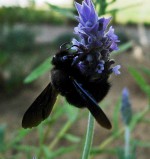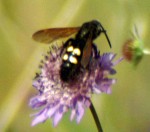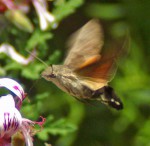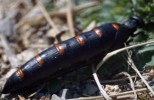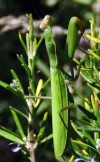Most of us visit the Alcornocales Natural Park to enjoy its nature and wildlife, but whilst it is a wonderful place for us to visit for recreation and relaxation, and an unquestionably vital haven for a myriad of wildlife species, it is also home to thousands of people that occupy the towns and villages within its range, and much of the forested land it occupies remains privately owned and managed.
17 towns and villages of varying sizes are embraced by the Alcornocales Natural Park. 16 of them are in the province of Cadíz: Alcalá de los Gazules, Algar, Algeciras, Arcos de la Frontera, Benalup-Casas Viejas, Benaocaz, Castellar de la Frontera, El Bosque, Jerez de la Frontera, Jimena de la Frontera, Los Barrios, Medina Sidonia, Prado del Rey, San José del Valle, Tarifa and Ubrique. The remaining town, Cortes de la Frontera falls within the boundaries of Malaga province.
I have discovered each place to have its own distinct character, but it is researching their histories that has really brought them to life for me; their peaceful modern-day façades belie long, fascinating and often bloody pasts.
The area has been populated for tens of thousands of years. This is attested by the presence of archaeological remnants of settlements by Neanderthals dating back more than thirty thousand years, as well as stone implements, engravings, and cave paintings from both the Paleolithic and Neolithic ages. Of the greatest interest to visitors, however, are the Bronze Age cave dwellings that dot the area. Of more than fifty caves discovered so far, there are three that have special artistic value: the Cueva del Tajo de las Figuras (Cave of the Figures on the Precipice), which has been compared to the Sistine Chapel among examples of cave art; the Cave of the High Laja, that houses pictures of the earliest-known boats to ply the Mediterranean; and the Cave of Bacinete, with more than a hundred pictographic representations in a magnificent state of conservation.
Later in history, a succession of civilizations and cultures, one superimposed on the next, has dominated this area, all of whom have contributed to its ethnological character. Each has left its marks on the landscape; there are megalithic monuments, Iberian, Phoenician, and Roman ruins, Arab strongholds, etc. Many of the towns that today comprise the park reached their highest state of civilization during the Muslim Nasrid dynasty, when this area was on the western fringe of the Kingdom of Granada. Today, in this area, many examples of the architecture introduced during the period of Muslim occupation survive; among them are the unique White Villages of Andalucía, of which Jimena de la Frontera, Castellar de la Frontera and Medina Sidonia are magnificent examples.
The towns have always been intimately and inextricably connected with their natural surroundings; some have suffered badly as a result of man-made changes to that environment, for example the village of Benalup-Casas Viejas as a result of the La Janda lake being drained. Some remain dependent on the land, while others appear to be seeing some economic benefit from their inclusion in the Natural Park, through tourism. The decline in demand for Cork bark by the wine industry may also prove to be a major threat to the survival of the very trees that are the lifeblood of the park and give it its name – el alcornoque– the cork oak tree. Those dependent on the bark harvest as a source of income may remove trees to clear land for growing other more profitable crops.
The survival of the park and its rich and diverse wildlife and the well-being of its inhabitants is in a delicate state of balance; the modern day dilemma of doing what is essential for the region’s nature and simultaneously catering to the needs of its human inhabitants.


